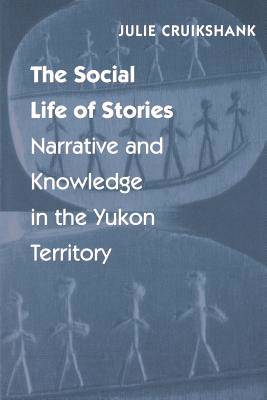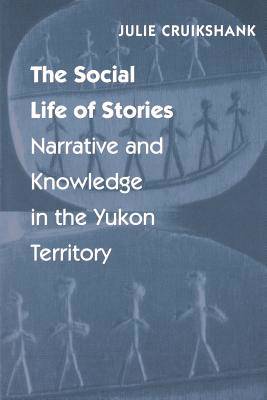
En raison d'une grêve chez bpost, votre commande pourrait être retardée. Vous avez besoin d’un livre rapidement ? Nos magasins vous accueillent à bras ouverts !
- Retrait gratuit dans votre magasin Club
- 7.000.000 titres dans notre catalogue
- Payer en toute sécurité
- Toujours un magasin près de chez vous
En raison de la grêve chez bpost, votre commande pourrait être retardée. Vous avez besoin d’un livre rapidement ? Nos magasins vous accueillent à bras ouverts !
- Retrait gratuit dans votre magasin Club
- 7.000.0000 titres dans notre catalogue
- Payer en toute sécurité
- Toujours un magasin près de chez vous
The Social Life of Stories
Narrative and Knowledge in the Yukon Territory
Julie Cruikshank
Livre broché | Anglais
30,95 €
+ 61 points
Description
In this theoretically sophisticated study of indigenous oral narratives, Julie Cruikshank moves beyond the text to explore the social significance of storytelling. Circumpolar Native peoples today experience strikingly different and often competing systems of narrative and knowledge. These systems include traditional oral stories; the authoritative, literate voice of the modern state; and the narrative forms used by academic disciplines to represent them to outsiders. Pressured by other systems of narrative and truth, how do Native peoples use their stories and find them still meaningful in the late twentieth century? Why does storytelling continue to thrive? What can anthropologists learn from the structure and performance of indigenous narratives to become better academic storytellers themselves?
Cruikshank addresses these questions by deftly blending the stories gathered from her own fieldwork with interdisciplinary theoretical perspectives on dialogue and storytelling, including the insights of Walter Benjamin, Mikhail Bakhtin, and Harold Innis. Her analysis reveals the many ways in which the artistry and structure of storytelling mediate between social action and local knowledge in indigenous northern communities.
Spécifications
Parties prenantes
- Auteur(s) :
- Editeur:
Contenu
- Nombre de pages :
- 221
- Langue:
- Anglais
Caractéristiques
- EAN:
- 9780803264090
- Date de parution :
- 01-08-00
- Format:
- Livre broché
- Format numérique:
- Trade paperback (VS)
- Dimensions :
- 153 mm x 229 mm
- Poids :
- 317 g

Les avis
Nous publions uniquement les avis qui respectent les conditions requises. Consultez nos conditions pour les avis.






